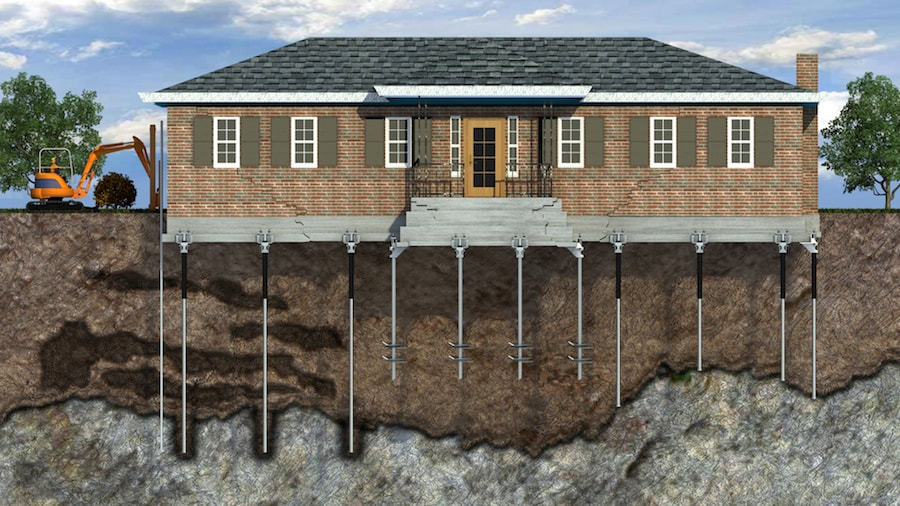|
FOUNDATION REPAIR:
Underpinning is a method used to increase foundation depth or repairing faulty foundations. Underpinning may be used if additional levels are to be added to an existing structure or if the foundation has been damaged. One visible sign that a building needs underpinning is when cracks are visible. A building needs underpinning when its foundation cracks are wider than ¼ inch and there are some signs of a faulty foundation, especially diagonal cracks. Foundation failures could also be considered as heaved foundations, cracked or buckled walls, and cracked concrete floors. Underpinning can be done for two cases: one, to improve the foundation system by enlarging the existing foundations or adding new foundations, and two, to improve the properties of the soil below the foundations without touching the building at all. |
|
Underpinning is usually done in following situations:
|
|
Underpinning with screw piles and brackets is normally used in certain instances where traditional underpinning process is not possible. Some buildings might require excavating to great depths or it may not be feasible to use a piling rig, making it ideal to use the screw piles and brackets method. The screw piles and brackets can be installed by a two-man crew by hand or by using small equipment such as a mini excavator. Screw piles can be installed in foundations having the capacity to work in tension and compression, withstand vertical and lateral wind forces, and vibration and shear forces. They are ideal when used with underpinning support brackets. The structure can then be lifted back to a level position with the weight of the foundation transferred to the pier and bracket system. Screw piles have many advantages over traditional pilings, such as the speed of installation and minimal noise and vibration which could cause damage to the surrounding area. Underpinning with piles and beams is another great method to alleviate footing. Using this system requires that a mini-pile be installed on either side of the affected wall. After the piles have been installed, brickwork is removed below the wall and reinforced concrete needle beams are used to connect the piles and support the wall.
Reducing the distance between needle beams can aid in accommodating very high loads. The bearing capacity of the underlying strata will determine the number, diameter, depth, and spacing of piles used. Augered piles or case driven piles can be used with this method of underpinning. |
|
Underpinning with a piled raft must be used when an entire structure needs to be underpinned. It is recommended when foundations are too deep for other underpinning methods or in areas where the soil is so hard that small equipment cannot excavate up to require depth. Piles are placed at determined locations by loading conditions; then pockets below footings are broken and reinforced needle beams are placed to bear the wall’s load. A ring beam is then built to link all needles and the structure is poured with concrete. |





